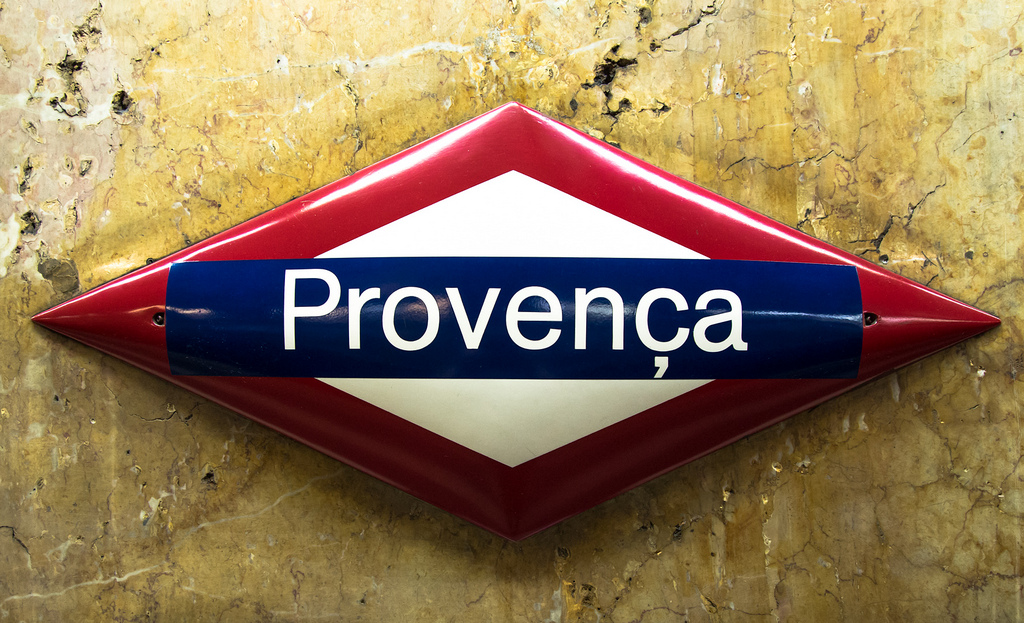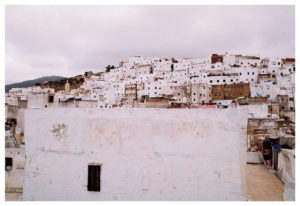

Photo credit: Himbeerdoni via VisualHunt.com / CC BY-NC-ND
Barcelona is crisscrossed by an extensive network of metro lines simply named ‘L’ (for linea, or ‘line’) followed by the line number. The station names themselves, however, offer a glimpse into the city’s history and introduce us to some of Barcelona’s famous historical personalities. Here we take a look at some of the most interesting station names and find out their meaning and significance.
Related article: Public Transportation: How to get around in Barcelona
Table of Contents
Urgell – L1
This station is located on the Carrer Comte d’Urgell, from which it takes its name. Urgell was one of the original Counties (or Comtes) of Catalonia, founded in the 8th Century AD as part of the Carolingian empire. Its territories included what is now the principality of Andorra, and the city of Lleida. It was absorbed into the County of Barcelona in 1413.
Tetuan – L2


Photo by pauhaus via Visualhunt
The metro station lies beneath the Plaça de Tetuan, named after the Moroccan city of Tetuan (or Tetouan – pictured right) which was besieged and occupied by Spanish forces (headed by Joan Prim and an army of Catalan volunteers) in 1860. It became the capital of the ‘Spanish Protectorate of Morocco’ in 1913 and remained so until 1956. Many people in the city today still speak Spanish as a result of this occupation.
Drassanes – L3
The former Royal Shipyards or Drassanes Reials are located just outside the metro station. They now house the Maritime Museum of Barcelona.
Onze de Setembre – L9 & 10
Taking its name from the Rambla Onze de Setembre, a major thoroughfare of the Sant Andreu district, this station commemorates 11th of September, the date of the fall of Barcelona to Spanish forces in 1714. Designated the National Day of Catalonia in 1886, it’s celebration was suppressed during Franco’s dictatorship, and reinstated in 1980 following his death and the return of democracy to the region.
Photo by UT440 131M via Visualhunt
Provença – L7
The Provença neighbourhood of Gràcia, which is served by this station, takes its name from the Southern French region of Provence, which was ruled by the Catalan Counts from 1112 until 1246.
Casa de l’Aigua – L11
This metro stop is named after the water elevation station nearby, which was built from 1915-19 following the typhus epidemic of 1914, in order to provide the city with a clean supply of drinking water and eradicate the disease. It is in the process of being renovated, and shortly to be opened as a museum by MUHBA.
Related article: Main train stations in Barcelona
Photo by Toni Martín via Visualhunt
Urquinaona – L1 & L4
This station is situated below the Plaça Urquinaona, which commemorates José Maria de Urquinaona y Vidot. Born in Cadiz in 1814, he became bishop of Barcelona in 1878 and remained so until his death in 1883.
Pep Ventura – L2
This station was named after Josep Maria Ventura i Casas (1817 – 75), a musician and composer who altered and innovated the traditional Catalan Sardana dance form and instruments of the Cobla ensemble used to accompany it, thus playing an important role in Catalan musical culture.
Lesseps – L3
The Plaça de Lesseps and its metro station are named after Ferdinand de Lesseps (1805-1894), a French diplomat and developer of the Suez Canal, who was appointed French Consul to Barcelona in 1842. During the bombardment of Barcelona in the same year, he protected men of all political allegiances from the indiscriminate bombing campaign ordered by the Spanish Crown in order to put down an insurgency in the city. For this reason he is celebrated as a local hero.
Photo by Francesc_2000 via Visualhunt
Verdaguer – L4&5
The Plaça de Mossèn Jacint Verdaguer located above this station celebrates one of the greatest poets in the Catalan language. During his lifetime (1845 – 1902) he also served as a priest. His major works include the epic poems L’Atlàntida and Canigó, and his 46-Stanza ode A Barcelona (‘To Barcelona’). The centrepiece of the Plaça is a column topped by a statue of Verdaguer (pictured left).
Jaume I – L4
Jaume I was King of Aragon and Count of Barcelona from 1213 – 76. He integrated Barcelona into the Aragonese crown and expanded its territories, and was an important figure in the development of the Catalan language and its literature.
Ildefons Cerdà – L9
This station takes its name from the visionary urban planner who designed the Eixample district of Barcelona in the late 19th Century.
Looking for a flat to rent during your stay in Barcelona? ShBarcelona is the answer.
Barcelona’s Mediterranean climate, with increasingly warmer and longer summers, makes air conditioning an essential feature…
Maybe you're thinking about selling a property or you've just inherited one or more real…
Do you enjoy strolling among trees and plants, away from the hustle and bustle of…
If you are planning to move to Barcelona for a few months or permanently, one…
ShBarcelona establishes itself as the leading agency within the Apialia Eixample Group, reaffirming its position…
Are you going to visit Barcelona this 2025? The vibrant Catalan capital once again becomes…